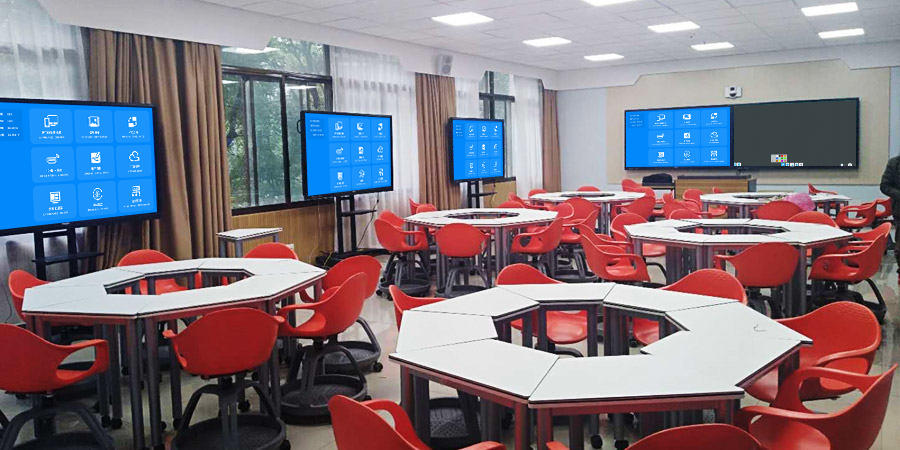Multi-Screen Interaction: Cross-Device Collaboration Solution
The multi-screen interaction solution breaks down the barriers between mobile phones, computers, tablets, and large screens, enabling seamless content flow and functional complementarity across different devices. With no complex operations required, it meets the needs of scenarios such as office collaboration, teaching interaction, and home entertainment, making information transmission more efficient and interaction more flexible.
Seamless Multi-Device Connection, Zero Adaptation Barriers
Whether it’s mobile phones/tablets running Android or iOS, computers with Windows or macOS, or large-screen devices like smart TVs and projectors—all can be automatically recognized once connected to the same network. Connection methods are simple and flexible:
- Complete pairing in 3 seconds via QR code scan;
- One-click connection through the device’s built-in “Wireless Projection” or “Screen Mirroring” functions.
No additional software installation is needed. It is compatible with both new and old devices, including old laptops and basic smart TVs, with no restrictions based on device model or system version.
Core Interaction Features, Tailored to Practical Needs
1. Cross-Screen Content Flow
Supports “one-to-many” and “many-to-one” casting:
- Office Scenarios: A computer can cast a project plan to the meeting large screen while synchronizing it to colleagues’ tablets, facilitating multi-person annotation.
- Home Entertainment: Travel photos taken on a mobile phone can be batch-cast to the TV, allowing the whole family to view them together without passing devices around.
2. Two-Way Control & Complementarity
- Use a tablet as a “second screen” for a computer to expand the work interface: Write reports on the computer while searching for information on the tablet.
- Let the computer take over mobile phone operations: Edit and reply directly to files and messages received on the mobile phone via the computer, avoiding frequent device switching and maintaining focus.
3. Real-Time Annotation Interaction
- During meetings or classes, circle key points and add annotations directly on the large screen—all marked content is synchronized to all connected devices.
- For multi-person collaboration, different devices can annotate simultaneously, with different colors used to distinguish ideas, making interaction more intuitive. The final annotated results can be saved and shared with one click.
In-Depth Adaptation to Multiple Scenarios, Dual Improvement of Efficiency and Experience
1. Office Collaboration Scenarios
When a team works on a project, members divide tasks across devices:
- One person builds the PPT framework on a computer;
- Another takes material photos on a mobile phone;
- A third designs illustrations on a tablet.
All content is summarized on the large screen in real time, keeping everyone updated on progress. During remote meetings, the mobile phone casts on-site images, the computer casts project details, and the large screen integrates and displays both—allowing remote colleagues to participate in discussions clearly and significantly improving collaboration efficiency.
2. Teaching Interaction Scenarios
- Teachers explain theoretical knowledge on a computer while a tablet synchronously plays experimental operation videos; the large screen integrates both types of content, helping students understand more thoroughly.
- During group discussions, students can cast their group’s ideas to the group’s large screen, then select a representative to cast the results to the public large screen for class-wide communication, making classroom interaction more active.
3. Home Entertainment Scenarios
- On weekends at home, cast movies or TV shows from a mobile phone to the TV, while the tablet synchronously displays the playback control interface—adjust progress or select episodes easily while lying down.
- When gathering with relatives and friends, multiple people can take turns casting games or short videos from their mobile phones to the TV, eliminating the need to crowd around small screens and making shared fun more enjoyable.
Administrators can remotely set device interaction permissions—specifying which devices can share content and whether reverse control is allowed—to avoid irrelevant interference. Devices are ready to use once connected to the network, with no complex wiring required, simplifying daily maintenance. Multi-screen interaction gives full play to the advantages of each device, meeting interaction needs in different scenarios.
